7 must-see works at the Aichi Triennale 2025
Sign up now: Get ST's newsletters delivered to your inbox

The exhibition is presenting 62 artists from 22 countries and territories in various venues across the Japanese prefecture.
ST PHOTOS: ONG SOR FERN
Follow topic:
AICHI, Japan – The Aichi Triennale 2025 opened on Sept 12 under the guidance of its first foreign artistic director, Sheikha Hoor Al Qasimi.
The exhibition, which is one of Japan’s leading contemporary arts festivals, is presenting 62 artists from 22 countries and territories in various venues across the Japanese prefecture.
The theme, inspired by contemporary Arab poet Adonis’ lines, is A Time Between Ashes And Roses. Two Singaporean artists – Robert Zhao Renhui and Priyageetha Dia – are showing at the festival
In Nagoya, the works are concentrated in the multidisciplinary Aichi Arts Center, which makes it easy for visitors to cram in a full day of art experiences. But it is also worth trekking out to Seto to check out the site-specific installations scattered throughout the city, as well as at the Aichi Prefectural Ceramic Museum.
Here are some of the must-see works at the triennale, which runs till Nov 30. Go to aichitriennale.jp/en/
Aichi Arts Center
1. Stolen Past by Hrair Sarkissian
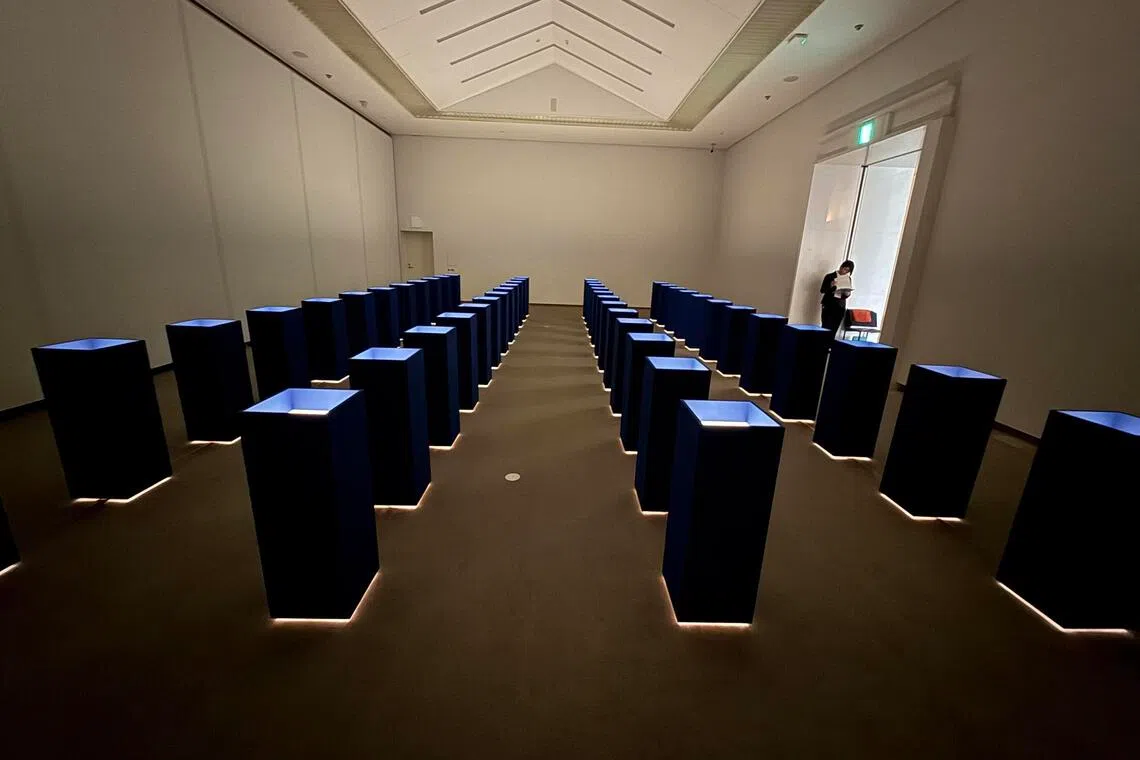
Stolen Past by Hrair Sarkissian.
ST PHOTO: ONG SOR FERN
In a dark room, 48 plinths stand in rows like tombstones in a cemetery. At the top of each structure is a 3D-printed lithophane panel carrying an image of an object lost or looted from the Raqqa Museum in northern Syria.
The museum once housed more than 8,000 artefacts that bore witness to the rich history and heritage of the region bordering the Euphrates river. Its collection included Paleolithic tools, cuneiform tablets and Raqqa-ware ceramics from the mediaeval era. But the institution was wrecked during the Islamic State’s occupation (2013 to 2017) and only 880 items are left.
This simple installation is both an epitaph to grief and loss, and a call to rebuild and protect.
2. Dioramas series by Sugimoto Hiroshi and mural paintings for Higashiyama Zoo by Ota Saburo, Miyamoto Saburo and Mizutani Kiyoshi
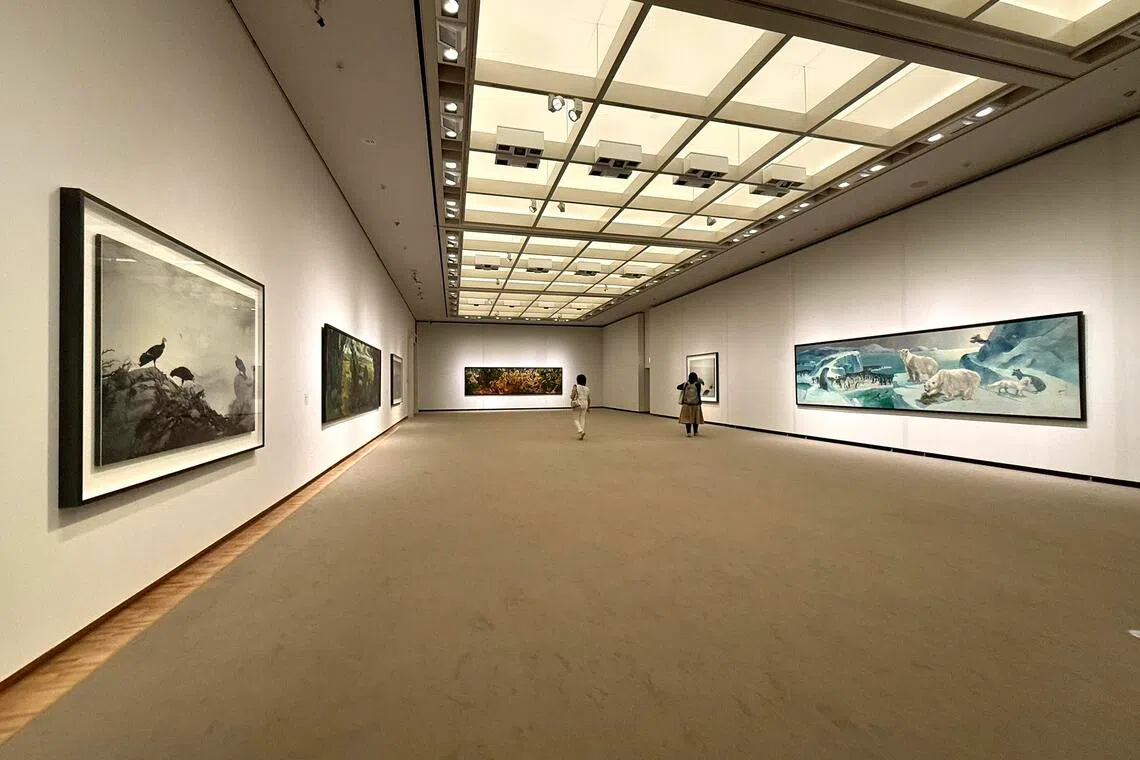
An installation view of Sugimoto Hiroshi’s Dioramas series and the mural paintings of Higashiyama Zoo at the Aichi Arts Center.
ST PHOTO: ONG SOR FERN
What looks like a conventional display of paintings and gelatin prints by artists is really an exercise in curatorial nous.
Sugimoto Hiroshi’s extraordinary photographs look like any National Geographic print, but they are really 20-minute exposure shots of dioramas taken at American museums over the course of 40 years. These images challenge the idea of real and fake, and also serve to highlight how humanity’s thirst for resources and space has already driven many species to extinction.
These photographs are set next to a series of murals created by artists for the Higashiyama Zoo when it reopened after World War II. When the Pacific war was in progress, the Japanese military ordered Nagoya City’s zoo to cull its carnivorous animals. The culling and wartime privations reduced the zoo’s more than 1,000 animals to just over 20 by the end of the war.
The two sets of works set up a dialogue about man’s relationship to the natural world.
Seto (Site-specific installations)
3. Unforgettable Residues by Sasaki Rui
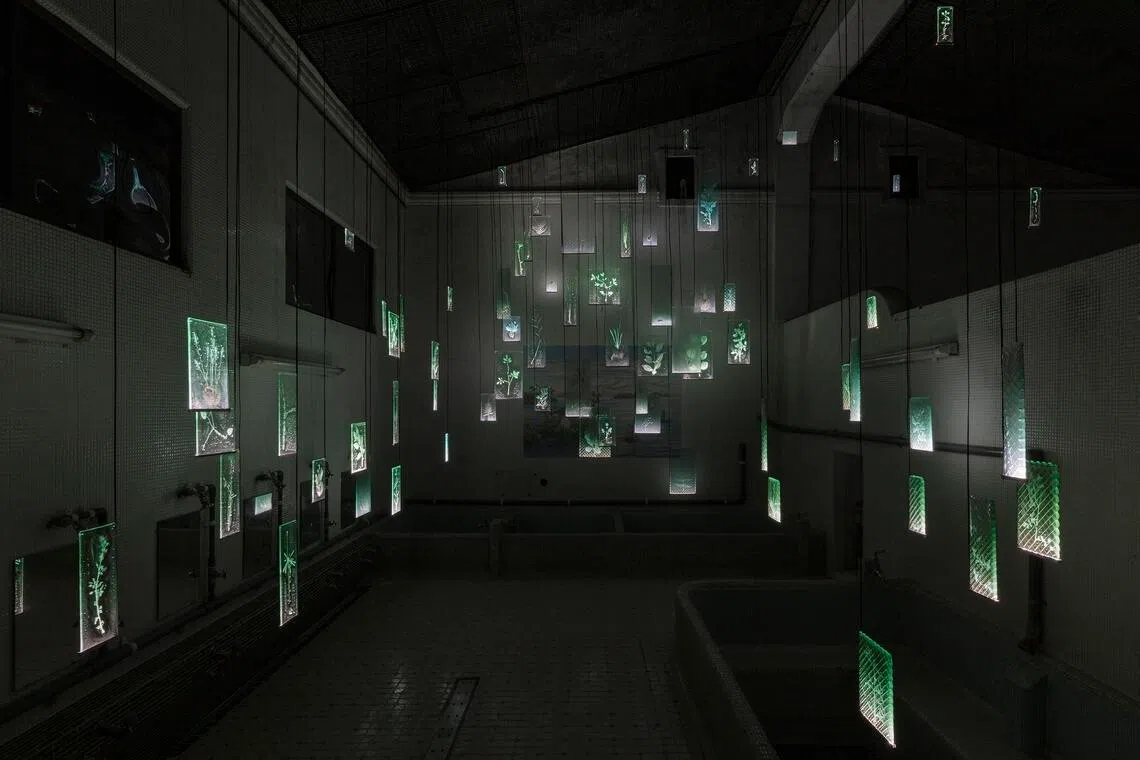
Sasaki Rui’s Unforgettable Residues is installed in an old sento (public bathhouse).
PHOTO: AICHI TRIENNALE ORGANISING COMMITTEE
Sasaki Rui’s installation of botanical specimens fired in glass panes hanging in a tiny sento (public bathhouse) is an ethereal sight.
The bathhouse was a family business for decades, run by a pair of elderly sisters, until it closed recently. Sasaki said during a press tour that she collected the plants unique to the region from all over Seto, sometimes picking weeds from roadsides to commemorate in her glass slides which are fired, turning the plants to ash but preserving their forms.
“All plants have become ash, but people can share memories of plants when they look at this work,” she said. “This is the character of public bathhouses in Japan, where people in the community gather to chat and share information.”
4. Terrestrial Poems by Adrian Villar Rojas
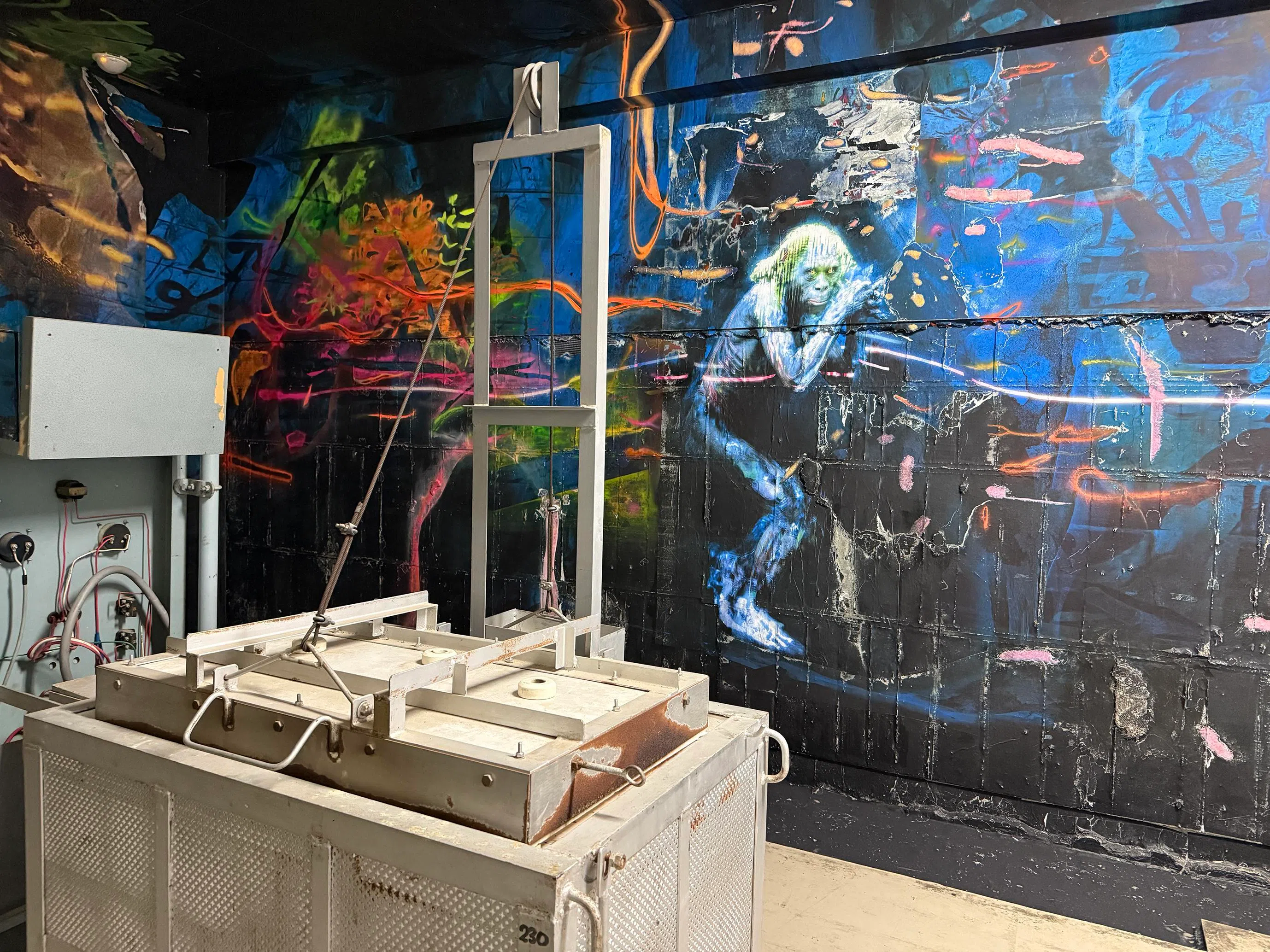
Terrestrial Poems by Adrian Villar Rojas.
ST PHOTO: ONG SOR FERN
Argentinian artist Adrian Villar Rojas has turned the former Seto Fukagawa Elementary School into a thought-provoking, if creepily eerie, space with his digitally printed “skins” covering the interior walls on the ground floor of this building.
Even Rojas observed during a press tour of the venue: “This is a decommissioned school and probably one of the most dystopian settings I have ever placed my work.”
He and a team of 12 took some 18 months to print and install the work, comprising layers of wallpaper that get scraped and treated to reveal gaps with other images as well as blank digital grids beneath.
Besides depicting examples from branches of the archaic human tree, from Neanderthals to Homo habilis, some of the images mirror the empty classrooms, extending space in discombobulating ways.
The 117-year-old school was closed in 2020 because of declining birth rates. In this context, Rojas’ images of ancient humans are a reminder of species resilience and spark questions of whether declining fertility rates might not be such a bad thing for the planet after all.
Seto (Aichi Prefectural Ceramic Museum)
5. Our Mountain Has Been Taken, And Cement Was Brought In by Marilyn Boror Bor
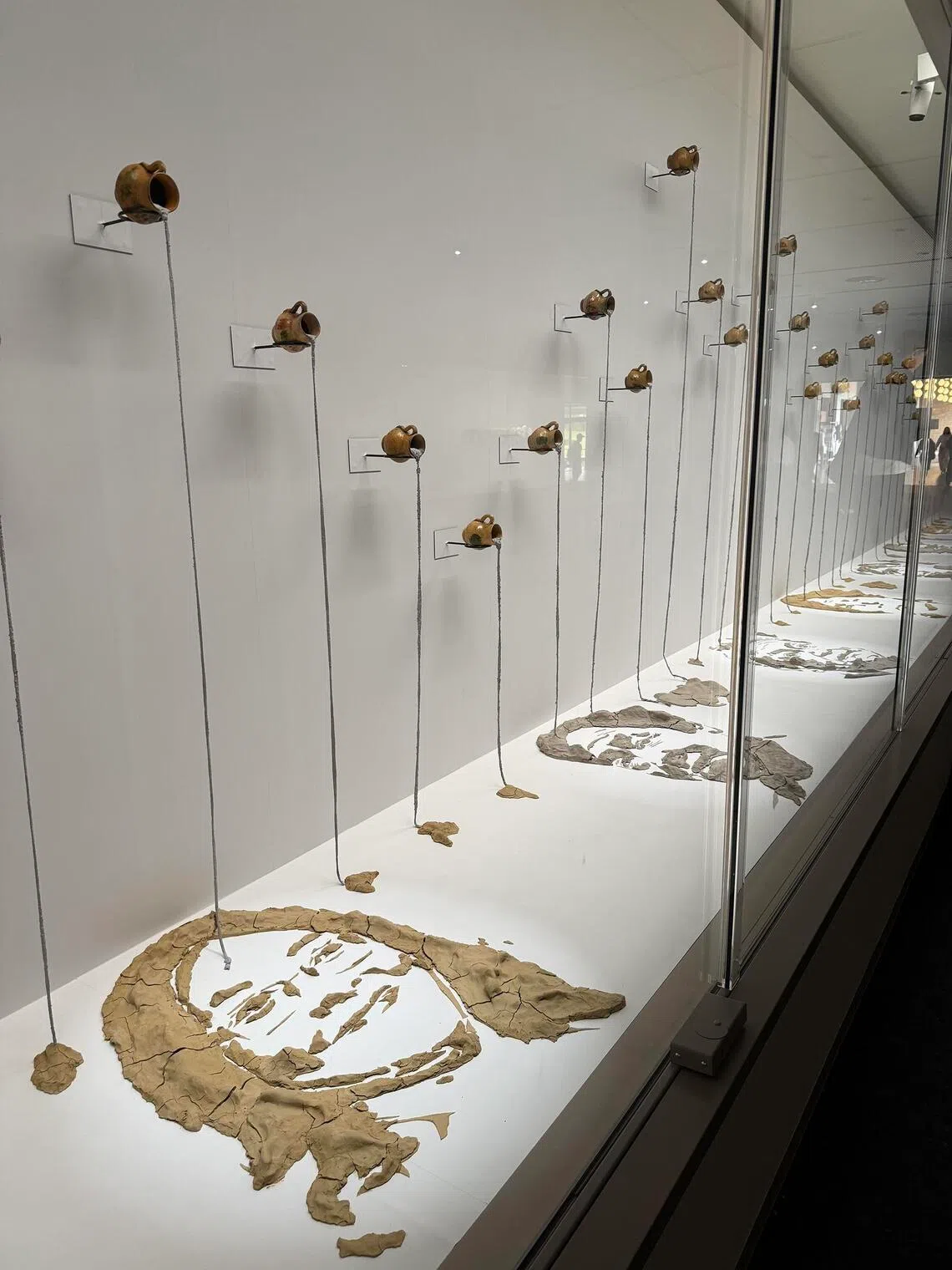
Marilyn Boror Bor’s work at the Aichi Triennale.
ST PHOTO: ONG SOR FERN
Maya-Kaqchikel artist Marilyn Boror Bor works in ceramic and cement for this piece, which speaks to indigenous experiences of modernisation and exploitation.
The tiny ceramic vessels are based on traditional ones used by indigenous people. The pots are filled with concrete, but the concrete dripping down changes to clay and, as it reaches the ground, forms portraits of important women in Bor’s community.
The work is partly inspired by the construction of a cement factory in Bor’s home town of San Juan Sacatepequez, which disrupted the community’s water supply.
6. Untitled by Simone Leigh
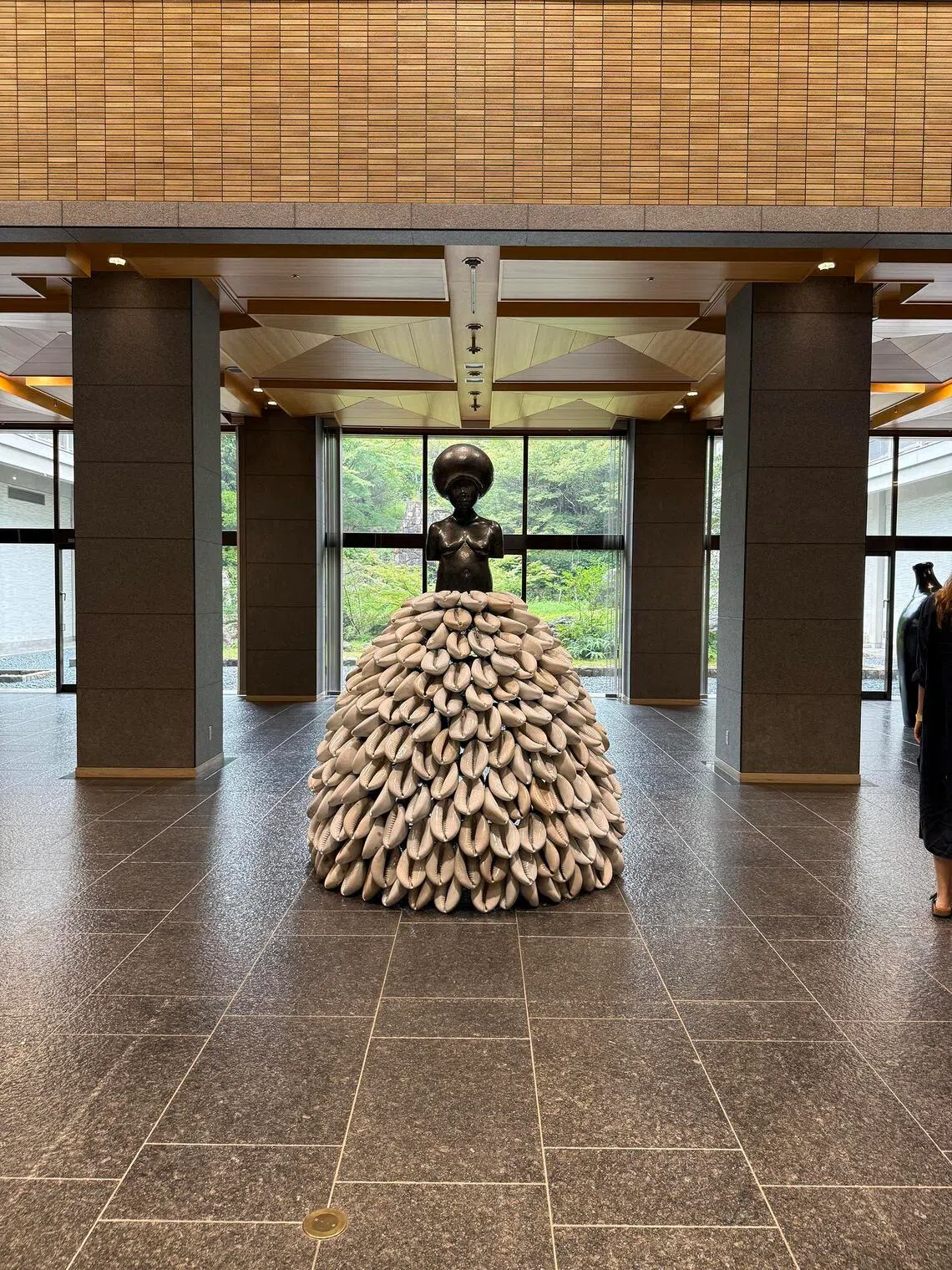
American artist Simone Leigh’s sculpture Untitled.
ST PHOTO: ONG SOR FERN
This sculpture by American artist Simone Leigh brings together horror and beauty. Cowrie shells, one of the world’s oldest forms of currency, recurs in Leigh’s work, which addresses the traumatic legacy of the trans-Atlantic slave trade.
Here, they are stacked into a pretty bell-shaped skirt for an African woman in a stark reminder of how black female bodies have been simultaneously appraised and devalued at the same time.
7. Resonating Boundaries by Nagasawa Aoi
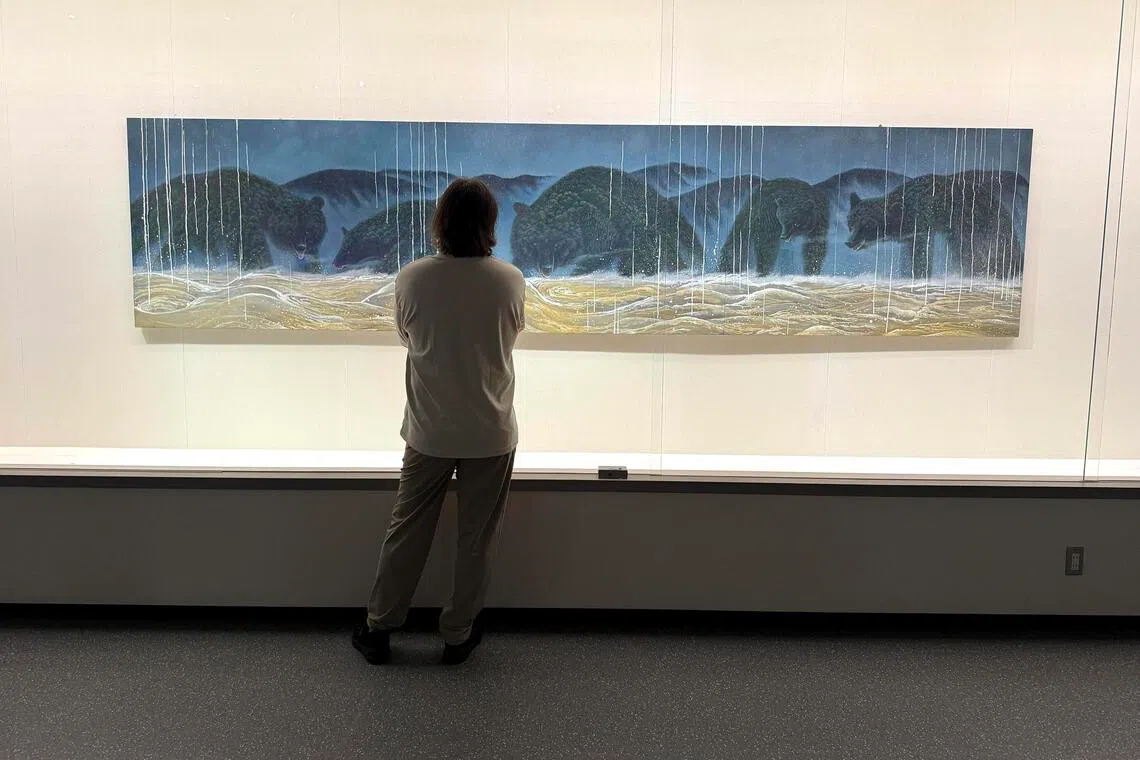
Nagasawa Aoi’s Resonating Boundaries.
ST PHOTO: ONG SOR FERN
Nagasawa Aoi’s blue-toned paintings of bears depict an unspoilt Eden where flora and fauna seem to exist in a peaceful idyll. Her works, however, are based on gritty real-life experience – the Akita-born artist grew up fishing and hunting, and is intimately acquainted with the process of butchering game.
Steeped in traditional hunting practices involving prayer and blessings, she has incorporated by-products of hunting in her work, using materials refined from animal blood and stones. Her works thus are both rooted in, and expressions of, ancient animist traditions.


